Comet Panstarrs C/2011 L4
Emerging comet in Western sky at sunset
For March 16, 2013
Uploaded 3/13/13

|
On This evening,
we got off work an hour earlier to try to get set up to get one
more view of this comet before the huge weather front moved in
for the weekend. (again). It did not look too good driving home,
but around 7pm when we were all set up on the top of our hill
site, the western sky partially cleared and the comet sat clearly
in a open patch between the clouds! Dawn had not seen the comet
yet, and we both were up there on this Thursday night. Dawn spotted
it first in the 9 x 63 binoculars, and as it got darker by 7pm
the tail and head were easily visible naked eye. The magnitude
was around 0 or 1 at this point, and the comet had a very distinctly
yellow coloration being so low in the sunset sky. When the comet
was at its best around 7:15 I was able to get in a sequence of
10 or so 10 second exposures to stack to reduce noise and increase
comet details. This is certainly the way to go for such short
exposures!
By 7:30 we watched
the comet sink into the cloud layers low on the horizon, and
vanish. We had a good night! The next night was totally overcast
and this weekend as I write this does not look anywhere near
promising.
|
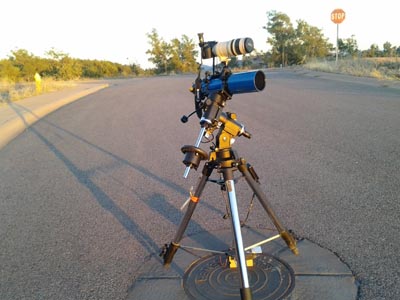 |
Here is the setup on the top of the hill,
on a currently abandoned road. The Televue
mount which I bought at the RTMC years ago
is still working great, on a Meade tripod. The
Stellarvue SV80 with Zeiss optics (Lomo) is
pre set for infinity focus, and on the top the
huge white lens is the Canon 100-400L
professional grade lens for wide angle work.
Select an image size for a larger view:
1290 x 960
|
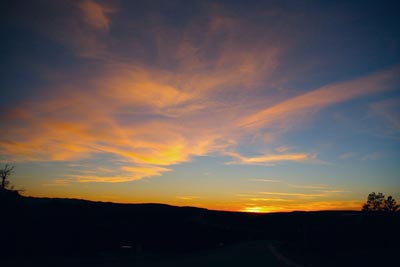 |
Here is the sky at the exact point of sunset.
the comet will be appearing just below that
small horizontal bar of clouds just above
the sunset point in the clear. Talking about
cutting it close!
Select an image size for a larger view:
1290 x 960
|
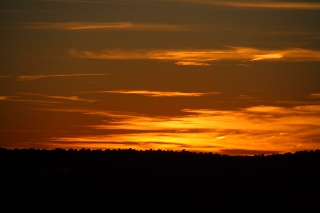 |
zoom in on the sunset with a 200mm
sigma lens. Not optimal for a comet!
Select an image size for a larger view:
1290 x 960
|
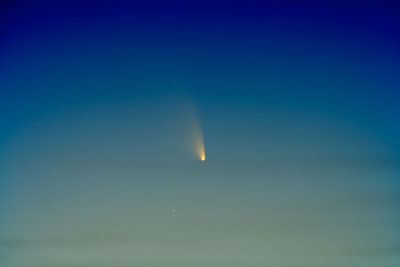 |
Six second exposure of the comet with the
Zeiss APO. it is equivalently 375mm at
f/4.6. The blue sky around the comet
is very bright.
Select an image size for a larger view:
1290 x 960
1600 x 1200
|
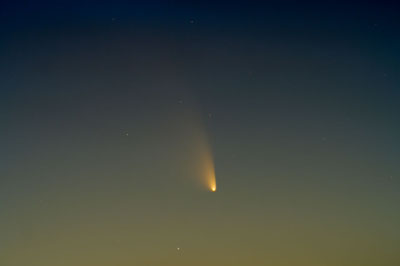 |
The best view of the comet was at 7:15 or so,
six 10 second exposures which was the max
I could do without saturating the sky were
averaged in Maxim DSLR aligning on the
comets nucleus. Note the sharpness of the
comet on the right side, and the diffuse
fan like tail on the left. The comet is roughly
2 degrees long here.
Select an image size for a larger view:
1290 x 960
1600 x 1200
|
Lens: 80mm f/4.6 Stellarfvue / Zeiss APO
Platform: Televue GEM
Exposure: 6 seconds, 60 seconds
Location: Payson, Arizona
Elevation: 5150 ft.
Sky: Seeing 7/10, Transparency 5/10
Outside Temperature: 45F
Processing Tools: Maxim DSLR, Photoshop CS2
HOME GALAXIES EMISSION NEBS REFLECTION NEBS COMETS
GLOBULARS OPEN CLUST PLANETARIES LINKS

|




